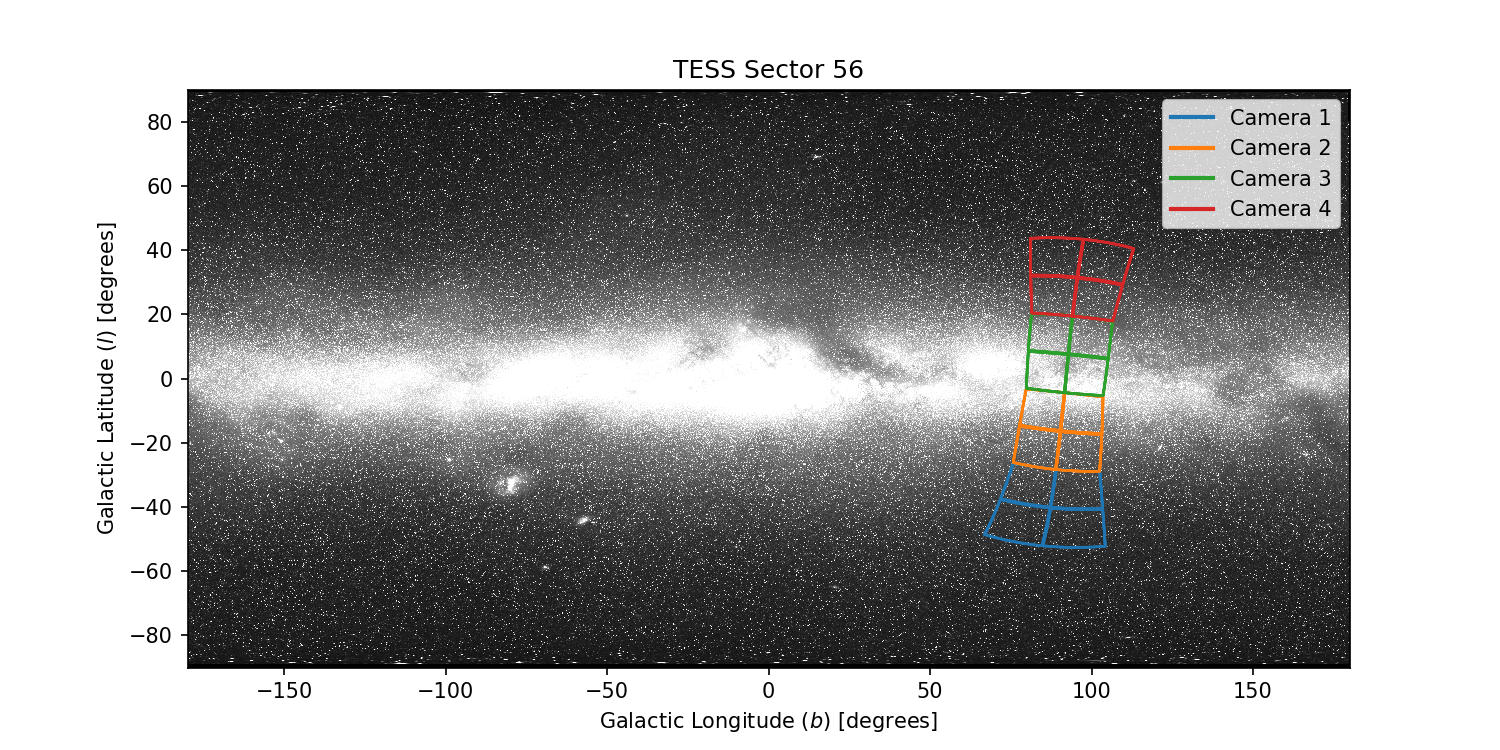
|

|
Sector 56 Information
For full data release notes see: DRN80. For a list of TIC IDs with noted issues, see this list.
Update: DR80 is the first data release of the second TESS extended mission, in which the FFI data collection interval has been reduced to 200 seconds. As in the primary mission and first extended mission, select pixel stamps were collected at 2-minute cadence and 20-second cadence. The number of targets in each data mode were adjusted: 13,000 targets were selected for 2-minute cadence observations, while all observable 20-second cadence targets were selected.
Sector Summary
Spacecraft Pointing (deg)
| RA | dec | roll | |
|---|---|---|---|
| Spacecraft | 324.28 | 46.34 | 36.25 |
| Camera 1 | 345.36 | 14.96 | 114.99 |
| Camera 2 | 333.05 | 36.3 | 120.43 |
| Camera 3 | 311.76 | 55.43 | 316.01 |
| Camera 4 | 266.08 | 65.86 | 356.48 |
Orbit Summary
| Orbits | Dates (UTC) Start - End |
Cadence # Start - End |
Momentum dumps |
|---|---|---|---|
| 119a | 2022-09-02 - 2022-09-09 | 1150414 - 1155075 | 1 |
| 119b | 2022-09-09 - 2022-09-16 | 1155226 - 1159962 | |
| 120a | 2022-09-16 - 2022-09-23 | 1160114 - 1165265 | 1 |
| 120b | 2022-09-23 - 2022-09-30 | 1165414 - 1170492 |
Sector Notes
| Noted Issue | Description |
| Spacecraft pointing | The pointing in Sector 56 was set at +55.5◦ in ecliptic latitude. As a result, Camera 4 was pointed near, but not exactly at the North Ecliptic Pole. The slight offset in target declination was introduced in the second Extended Mission to allow observations of the North Ecliptic Pole itself, which has fallen in the gaps between CCDs in the Prime Mission and first Extended Mission. Camera 1 and Camera 4 were used for guiding in both orbit 119 and 120, except for the second half of orbit 119 in which Camera 4 alone was used for guiding. |
| Scattered light | In Sector 56, the Moon introduces scattered light signals towards the second half of orbit 1. |
| Cosmic rays | Cosmic rays were mitigated in the 2-minute cadence data and 200-second FFIs by analgorithm running on the instrument firmware, in the same way as in the primary mission and first extended mission. For the 20-second cadence data, cosmic rays were identified and corrected in SPOC data processing, in the same way as the first extended mission. See DRN38 for details. |
